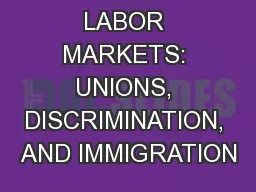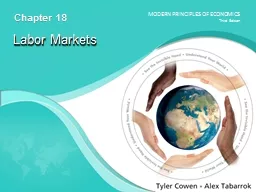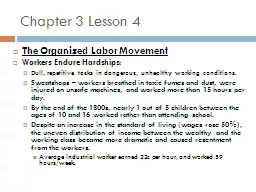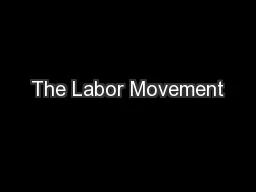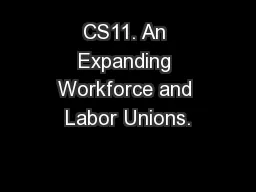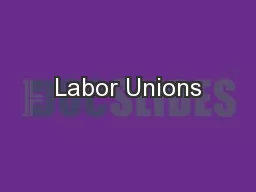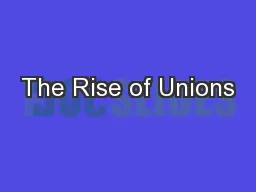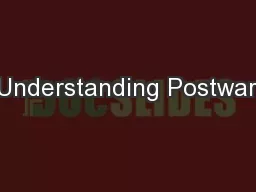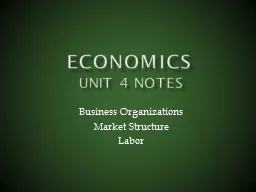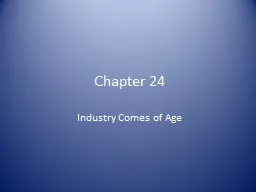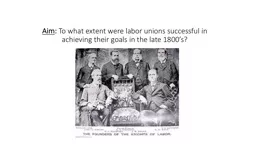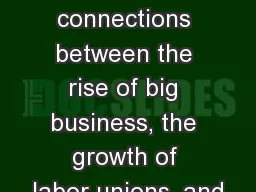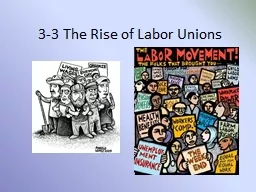PPT-LABOR MARKETS: UNIONS, DISCRIMINATION, AND IMMIGRATION
Author : karlyn-bohler | Published Date : 2018-10-21
DR RICHARD GEARHART ENTERPRISE COLLEGE 6162016 LABOR SUPPLY AND DEMAND EQUILIBRIUM UNIONS Unions are a collection of workers that negotiate wages fringe benefits
Presentation Embed Code
Download Presentation
Download Presentation The PPT/PDF document "LABOR MARKETS: UNIONS, DISCRIMINATION, A..." is the property of its rightful owner. Permission is granted to download and print the materials on this website for personal, non-commercial use only, and to display it on your personal computer provided you do not modify the materials and that you retain all copyright notices contained in the materials. By downloading content from our website, you accept the terms of this agreement.
LABOR MARKETS: UNIONS, DISCRIMINATION, AND IMMIGRATION: Transcript
Download Rules Of Document
"LABOR MARKETS: UNIONS, DISCRIMINATION, AND IMMIGRATION"The content belongs to its owner. You may download and print it for personal use, without modification, and keep all copyright notices. By downloading, you agree to these terms.
Related Documents

